In this latest edition of her regular column, Tiffani Angus—co-author of Spec Fic for Newbies (including the just-released Volume 2!)—brings forth the creepy kids.
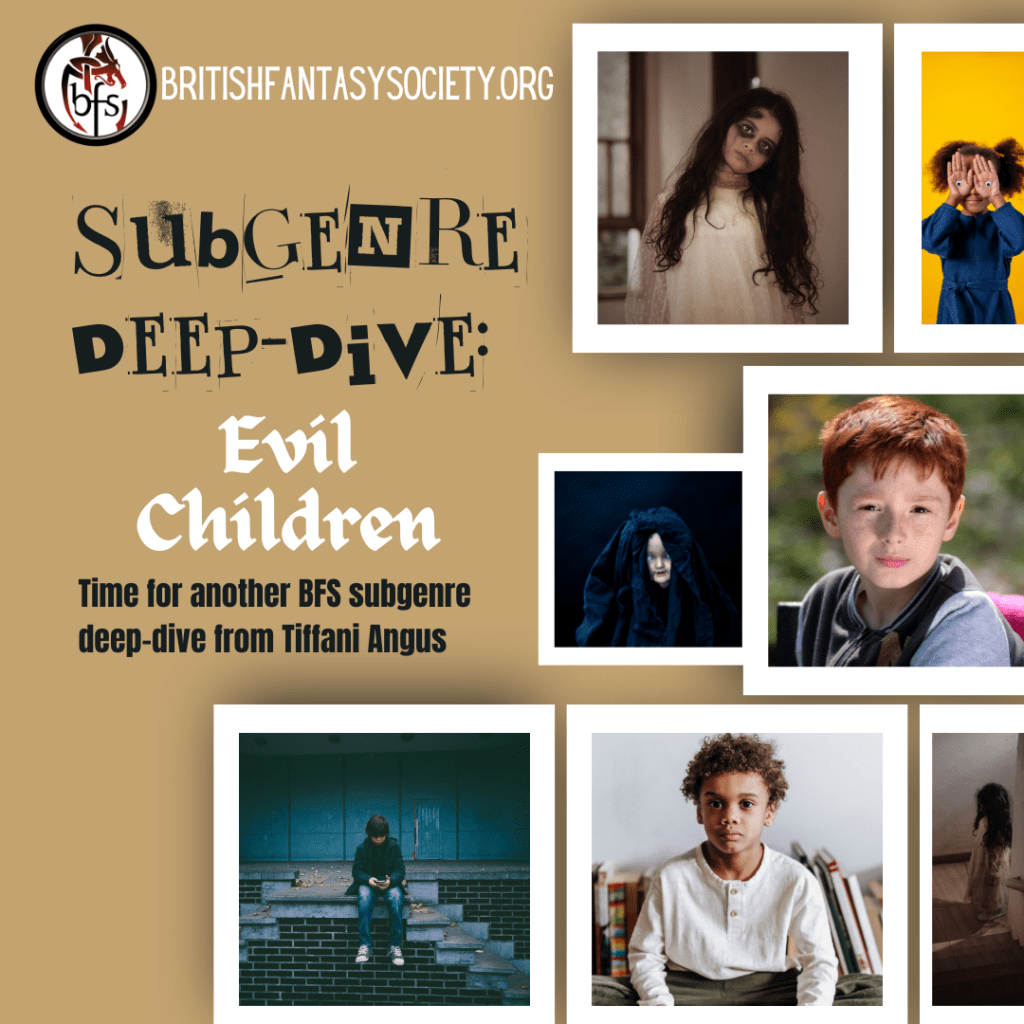
Kids, amirite? Always crying or sleeping or pooping or hungry. With their little fingers and toes, their little horn nubs, their glowing red eyes.
They take and take, leaving you a husk of a person without any autonomy or ability to do anything but feed all their needs: milk, love, obedience, your very soul.
And if you want to pop out to the shop, you need to hire an exorcist to come tend to the little nipper.
Face it, your baby is evil….
This month, the Subgenre Deep Dive is pulling back the blanket to examine a popular trope in horror: evil children.
This is a tweaked section of the brand-new Spec Fic for Newbies Vol. 2: A Beginner’s Guide to Writing More Subgenres of Science Fiction, Fantasy, and Horror out this week from Luna Press! Spec Fic for Newbies Vol. 1 (2023) was recently featured on Locus’s Recommended Reading List and made the BSFA Best (Long) Nonfiction finalist list, so why not see what Volume 2 has in store?
You’ll find 30 more subgenres and tropes from Science Fiction, Fantasy, and Horror, plus their histories, identifying elements, lists of what’s cool and pitfalls to avoid, and activities to get you writing. Plus the usual puns and snarky jokes! So, what are you waiting for? Grab it from here.
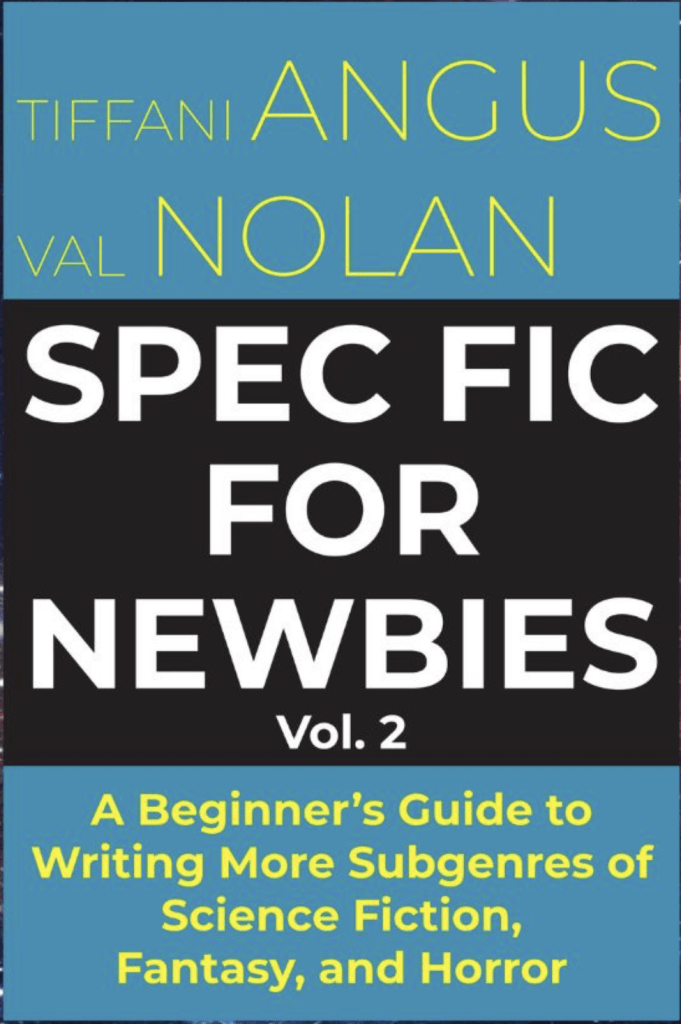
Tiffani Angus and Val Nolan, authors of Spec Fic for Newbies Vol 2, will be interviewed at Saturday’s BFS Online: Writing Your Way. It’s free for members, and just £5 for everyone else. Details and tickets here.
This month is a look at… EVIL CHILDREN
How can babies or small children be so evil in so many stories? They’re brand new; they haven’t had time to be corrupted by sugar or capitalism or Fox News! So, what would make them evil?
The first easy answer is tied up in religious beliefs about the origin of evil. Catholicism holds the doctrine of original sin, which explains that because Adam and Eve ate from the Tree of Knowledge, everyone is born with original sin and infants must be baptised to be cleansed of it—although since the Enlightenment this isn’t as strong a belief and some Christian sects don’t follow it. In Western Europe’s early modern period, during which Protestantism took hold in many areas, this belief was “altered”; in Children of Wrath: Possession, Prophesy and the Young in Early Modern England, Anna French explains that “elect children, although born in sin, were saved by the choice of God, and that baptism could not impart grace or salvation” (2015, p. 13). Judaism, however, “believe[s] that man enters the world free of sin, with a soul that is pure and innocent and untainted”; furthermore, Islam also has no such belief equal to original sin.
Documented “‘monstrous births’ of the early modern period—instances of deformed infants born to uncomprehending mothers and communities—were interpreted alternately as signs of God’s judgement or His wrath, casting children as the physical symbol of divine will on earth” (French, 2015, p. 6). Records from the time detail the danger children were in; in A booke declaring the fearful vexation of one Alexander Nyndge (1573), the older brother Edward (no ages given) describes Alexander’s possession and Edward’s work to gather the family and neighbours to pray and exorcise the demon. So, depending on a person’s faith, right out of the gate some children were set up to be bad while others were ripe for corruption, beliefs that strongly influenced later fiction.

Religion, at least in the West, directly influenced education (and still does in some cases). Early childrearing and household-advice books were often linked to a family’s or society’s Christian faith, such as A werke for Householders and for them that have the Gydyng or Governaunce of any Company (1530) by priest Richard Whitford and Mothers Blessing, written by Dorothy Leigh to her three sons in case of her death (14 editions from 1616 to 1685), which “illustrates godly families’ desire to ensure that their children had the best possible chance of salvation, and that this would be at least in part achieved through proper instruction and education” (French, 2015, p. 30).
(Photo by Erik Mclean on Unsplash)
Educational materials used to teach children in the early days of “formal” education were also full of dogma. English Puritan minister James Janeway wrote A token for children: Being an exact account of the conversion, holy and exemplary lives, and joyful deaths of several young children in two parts in circa 1670 with a preface that addresses anyone and everyone involved in children’s education. Entries describe how children between two to 12 years old were converted to Christianity or saved, and then how they died young, all with the goal of teaching children how to behave. Morbid, yes. Effective? Not sure! But Christianity was front and centre in the teaching book The New England Primer, first published in 1688 and used in both the American colonies and Great Britian for 150 years, combining lessons in spelling and morality: “sin, death, punishment, salvation, and respect for authority were displayed through alphabetic rhymed couplets, poems, prayers, and scriptures”. The books taught children how to read so they could read the bible or hymns, not titillating novels or stories (not that there were many of those cheaply available back then anyway!).
Can parents “raise good kids”?
Then we have philosophy’s take on the question of how to raise kids. John Locke’s 1693 treatise Some Thoughts Concerning Education outlined every aspect, from dressing and feeding to toilet training them. He also, of course, offers his opinion on education: “The great mistake I have observed in people’s breeding their children has been … that the mind has not been made obedient to discipline, and pliant to reason, when at first it was most tender, most easy to be bowed.” In the midst of the Enlightenment, Jean-Jacques Rousseau’s treatise Émile, or Education (1762) urges people not to swaddle babies and women to breastfeed their own children and not “be the slaves of fashion”, which will result in better health and easier childbirth; men must “support and educate” their own children, which should be raised outside of cities because nature is better for them, although this includes bathing them in ice-cold water. Take Rousseau with a grain of salt, however, because he was unable to support his children and they were placed in foundling homes.
From these to Benjamin Spock’s The Common Sense Book of Baby and Child Care (seven new editions since it was first published in 1957), parents have been obsessed with how to raise good kids. We birth them, we raise them, but sometimes it feels like a total crap shoot whether they end up productive members of society or sporting jail tatts.
Writers have taken this to heart and created all manner of stories in which a kid is just evil, often even from birth. A classic example is Henry James’s novella The Turn of the Screw (1898), about a governess tasked with caring for two young children in mysterious circumstances, but it raises more questions than it answers: are the ghosts encountered real? Is the governess hallucinating? Are the children evil?

An early genre story is Ray Bradbury’s ‘The Small Assassin’ (1946), about a newborn who murders his parents. Even the mystery genre used the trope, such as in Agatha Christie’s Crooked House (1949), which features 12-year-old killer Josephine. In Jerome Bixby’s ‘It’s a Good Life’ (1953; later adapted for The Twilight Zone), a three-year-old with god-like powers but the undeveloped mind of a small child puts everyone around him in danger from his moods and selfishness. And William March’s The Bad Seed (1954) offers readers a sociopathic girl whose mother discovers her murderous streak and fears that it’s genetic, passed on by her own mother who was a serial killer (so, a tick on the side of nature over nurture).
Evil twins! Resurrections! Feminism!
There’s no lack of variation of the trope. One is evil twins, which soap operas have been rehashing for decades, so much so that it’s reached the point of parody. The idea of the evil twin or doppelgänger destabilises identity and our protagonists’ notions of certainty while raising questions about who’s who (and who might only be pretending to be someone else!). In The Other by Thomas Tryon (1971), Niles can astral project his mind into other’s bodies, resulting in several deaths; it turns out his twin, Holland, has been dead for months, with Niles blaming all the tragic deaths on his brother. Horror fiction will poke at the most subversive of topics, and the death of children isn’t off limits. These stories explore how grief pushes a parent to take the most outlandish action to turn back time while simultaneously punishing said parents for trying to play with nature. Aside from the lesson about what not to do when your pet or kid or wife dies in Stephen King’s Pet Sematary (1983), there’s also ‘Bobby’ in the made-for-television horror anthology film Dead of Night (dir. Dan Curtis, 1977), about a grieving mother who brings her drowned son back from the dead, yet the kid isn’t the Bobby she knew.
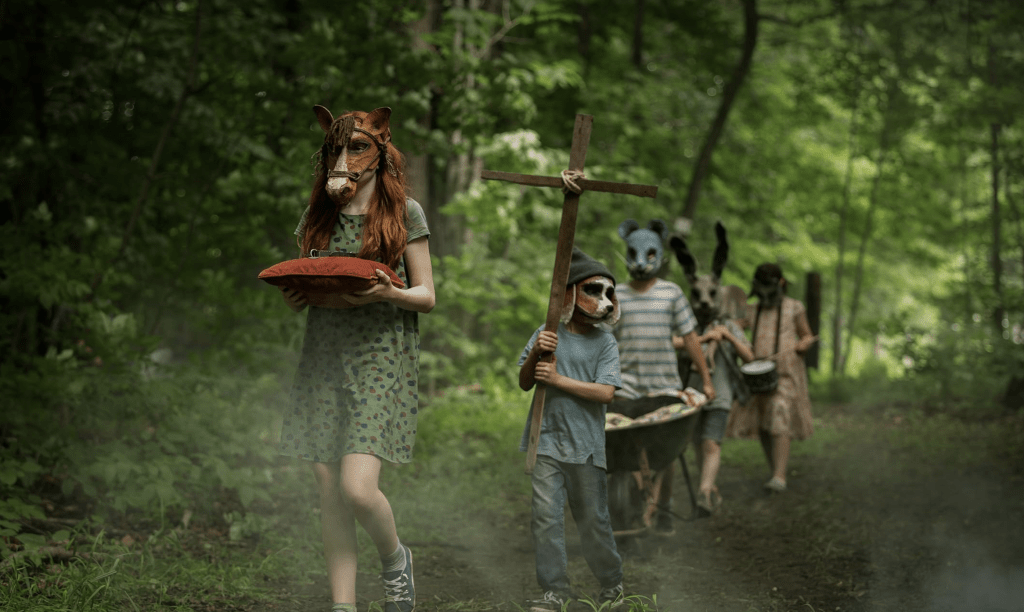
As we slid into the latter half of the twentieth century, these stories were mostly in-your-face about the source of the evil being the literal devil but they also subtly carried themes related to the rise of feminism. The cinema classic Rosemary’s Baby (dir. Roman Polanski, 1968), based on Ira Levin’s 1967 novel of the same name, is one of the first films in which the child is actually Satan’s. When Rosemary discovers the truth about the child, she resists, but the sound of the baby’s cries tugs at her “motherly instincts” (a recurring and not unproblematic aspect of the trope). Then came the iconic 1973 film The Exorcist (dir. William Friedkin), based on William Peter Blatty’s 1971 novel, about young Regan whose actress mother is raising her while divorcing Regan’s father; Regan begins to act out—as we now know kids may do during a traumatic period—but the film’s explanation is that the devil is acting through her and it’s not actually this sweet kid who’s projectile vomiting and doing naughty things with crucifixes.
All that said, if you ask anyone to name a story about a demonic child, it’s likely they’ll say Damien from The Omen. In director Richard Donner’s film (1976; novelised by David Seltzer in the same year), a hospital chaplain convinces a father to secretly swap out his stillborn baby for another whose mother died in childbirth; unfortunately, all manner of terrible things happen around Damien, and it turns out—surprise!—he’s Satan’s son. That guy really gets around, huh? In a scene after the father discovers who Damien is, the mother, Kathy, tells her husband she wants an abortion; Damien injures her enough that she miscarries because he doesn’t want any competition, but the question of whether she’s punished for just wanting something that had only been legal in the US for a few years is inevitable. This film spawned (see what we did there?) all manner of sequels and remakes.
Another take on the trope links back to the historic worry about “monstrous births” as punishment: It’s Alive (dir. Larry Cohen, 1974) is about a monstrously deformed child born to a woman who’d been on birth control pills for several years that goes on a killing spree; at the end, the police discover that a similar child has been born in another town, bringing the idea of a deformed child being the symbol of God’s judgement or wrath (for daring to take birth control?) into the midst of second-wave feminism.

On the more bizarre end of horror is The Suckling, aka Sewage Baby (dir. Francis Teri, 1990), in which a foetus is disposed of down a toilet by the back-alley abortionist where it turns into a monster after coming into contact with toxic waste. It then goes on a killing spree in a plot line that could have been lifted right out of Conservative America’s anti-abortion talking points.
Still from Sewage Baby (1990) taken from IMDb.
Beware the teens in cults
Subverting the cultural belief that babies and small children must be protected rather than be something you must be protected from can be an easy trick to strike terror in the hearts of parents or future parents. And, for some adults, teenagers are already alien—their clothes and hair, the vocabulary they use, their weird behaviours (Flossing? Dabbing? Planking? Only a few years old, these are already as uncool as swallowing goldfish!)—which can make them seem aggressive and scary, so it’s only a short jump to using them in our fiction to upset the order of how things are “supposed to be”.
In William Golding’s Lord of the Flies (1954), English public schoolboys rehearse a future as Tory MPs by descending into paranoia, backstabbing, mob mentality, and savagery after being stranded on an island after a plane crash. In the Spanish film Who Can Kill a Child? (dir. Narciso Ibáñez Serrador, 1976) a couple visit a small island only to discover that the kids are responsible for the disappearance of all the adults in the town.
An added twist on the trope is cults; children are the lifeblood of cults, their minds malleable to the leaders’ twisted ideas. The most famous cult story about kids is surely Stephen King’s ‘Children of the Corn’, first published in 1974, about an unfortunate couple whose car breaks down in the Nebraska farmland only to encounter a community of children, led by teenagers, who worship a being that lives in the fields. And did we mention there aren’t any adults because, well, the kids kill them all off? This short story has been turned into eleven (11!) films from 1984 to 2020, including some that went direct to video or were made for television, proving that even a story short on words can inspire a cult following (ba-doom-cha!).

Evil kids in the 21st century
More recent takes on the evil-children trope run the gamut from supernatural to possession to a more psychological query on the nature of evil. In Whisper (dir. Stewart Hendler, 2007), young David is kidnapped by an ex-felon who needs the ransom money, but soon the kidnappers discover that David has the supernatural ability to control people via whispered commands and that his mother orchestrated the kidnapping.
All kids have to grow up, and writers know that the changes of puberty can bring out pimples as well as vicious mood swings, which is one theme of Brightburn (dir. David Yarovesky, 2019) in which—in a sort of twisted take on Superman—a kid from another planet turns from okay to very-not-okay as he grows up.
Possession by a non-Christian demon pops up in The Unborn (dir. David S. Goyer, 2009), a convoluted tale of a girl whose twin died in utero and who ends up fighting a dybbuk’s curse on her family; the dybbuk wants revenge for losing the body it inhabited during WWII (the twin of the girl’s grandmother). The girl loses her boyfriend in the film’s climactic scene but then discovers that she is pregnant with twins (cue ominous music!). In The Prodigy (dir. Nicholas McCarthy, 2019) Miles is a gifted child possessed by the ghost of a dangerous serial killer. And in the “found-footage” film Home Movie (dir. Christopher Denham, 2008), a pastor and a psychologist have twin 10-year-old kids whose creepy and dangerous behaviour increases as the film builds towards its climax, leading viewer to wonder if evil is spiritual or psychological.
The evil children trope is one that lasts because kids are like fresh Play-Doh: no matter how careful you are, the colours get mixed up and you end up with all manner of detritus marring a once-pure blob. We may think we have the answers—religion, education, psychology—but they aren’t a “do-over” machine, and we are stuck with evil in a small package. Sometimes, despite having good parents, good schooling, and a good life, people just don’t act right, which is terrifying for adults who’re socialised to care for and protect kids. All of this makes it a fun trope to play with to terrify adults who don’t know how to protect themselves from people smaller and, supposedly, weaker than them.
Some recommended reading/viewing
(including entries not found in the article)
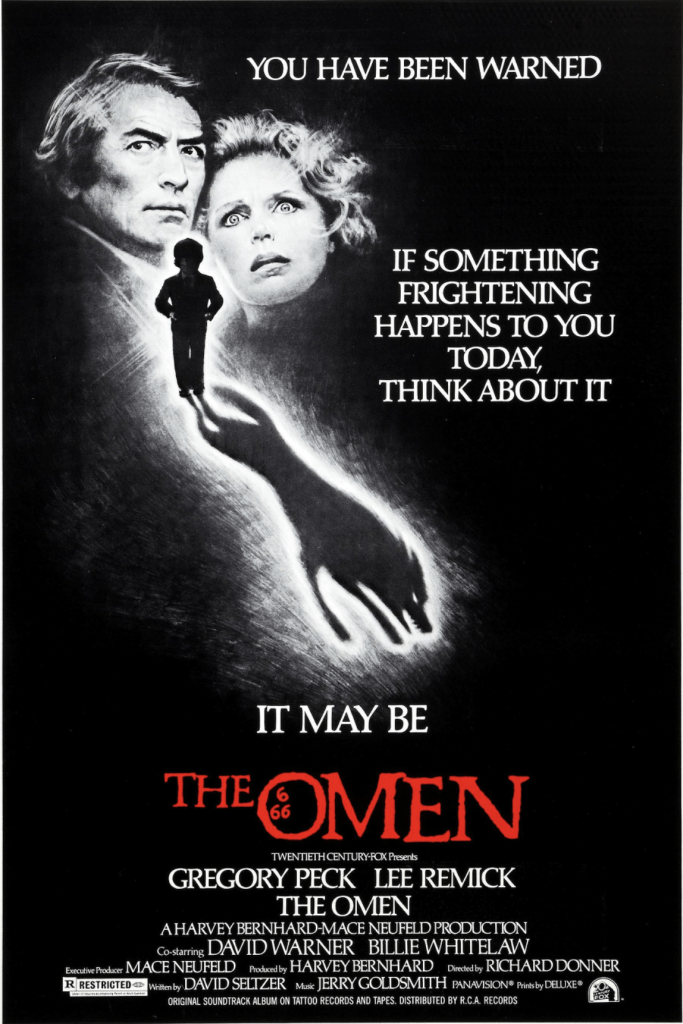
- Henry James’s The Turn of the Screw (1898)
- H.P. Lovecraft’s The Dunwich Horror (1929)
- Ray Bradbury’s ‘The Small Assassin’ (1946)
- Agatha Christie’s Crooked House (1949)
- Richard Matheson’s ‘Born of Man and Woman’ (1950)
- Jerome Bixby’s ‘It’s a Good Life’ (1953) (adapted for The Twilight Zone)
- William March’s The Bad Seed (1954)
- William Golding’s Lord of the Flies (1954)
- John Wyndham’s The Midwich Cuckoos (1957)
- Ira Levin’s Rosemary’s Baby (1967); film Rosemary’s Baby (dir. Roman Polanski, 1968)
- Thomas Tryon’s The Other (1971)
- William Peter Blatty’s The Exorcist (1971); film The Exorcist (dir. William Friedkin, 1973)
- Stephen King’s ‘Children of the Corn’ (1974) and its 11 film versions
- It’s Alive (dir. Larry Cohen, 1974)
- Who Can Kill a Child? (dir. Narciso Ibáñez Serrador, 1976)
- The Omen (dir. Richard Donner, 1976); novelised by David Seltzer in the same year
- ‘Bobby’ in Dead of Night (dir. Dan Curtis, 1977)
- The Children (dir. Max Kalmanowicz, 1980)
- Mutation by Robin Cook (1989)
- The Suckling (aka Sewage Baby) (dir. Francis Teri, 1990)
- The Good Son (dir. Joseph Ruben, 1993)
- Them (Ils, dir. David Moreau and Xavier Palud, 2006)
- Whisper (dir. Stewart Hendler, 2007)
- Home Movie (dir. Christopher Denham, 2008)
- Grace (dir. Paul Solet, 2009)
- The Unborn (dir. David S. Goyer, 2009)
- The Prodigy (dir. Nicholas McCarthy, 2019)
- Brightburn (dir. David Yarovesky, 2019)



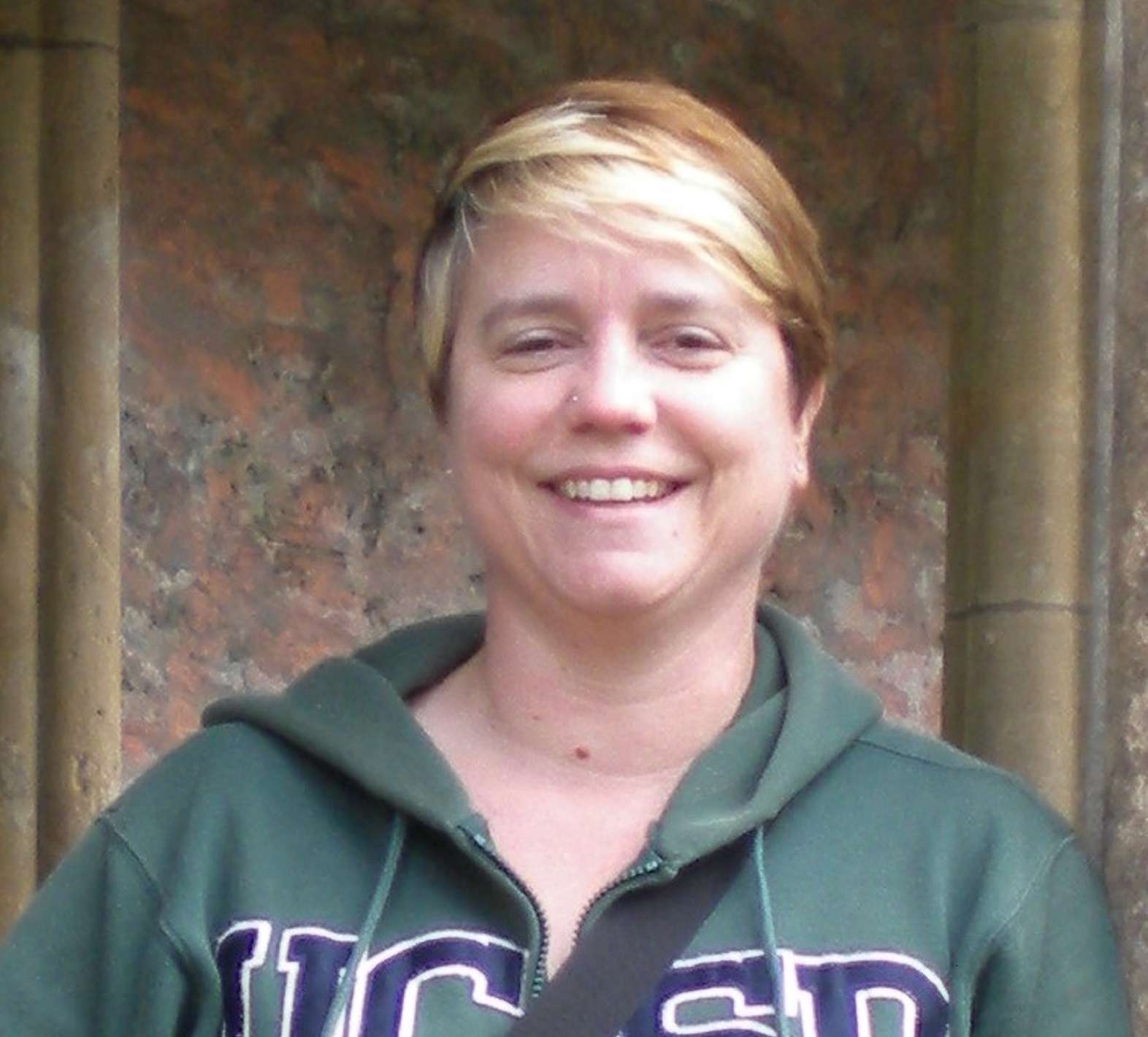
Leave a Reply